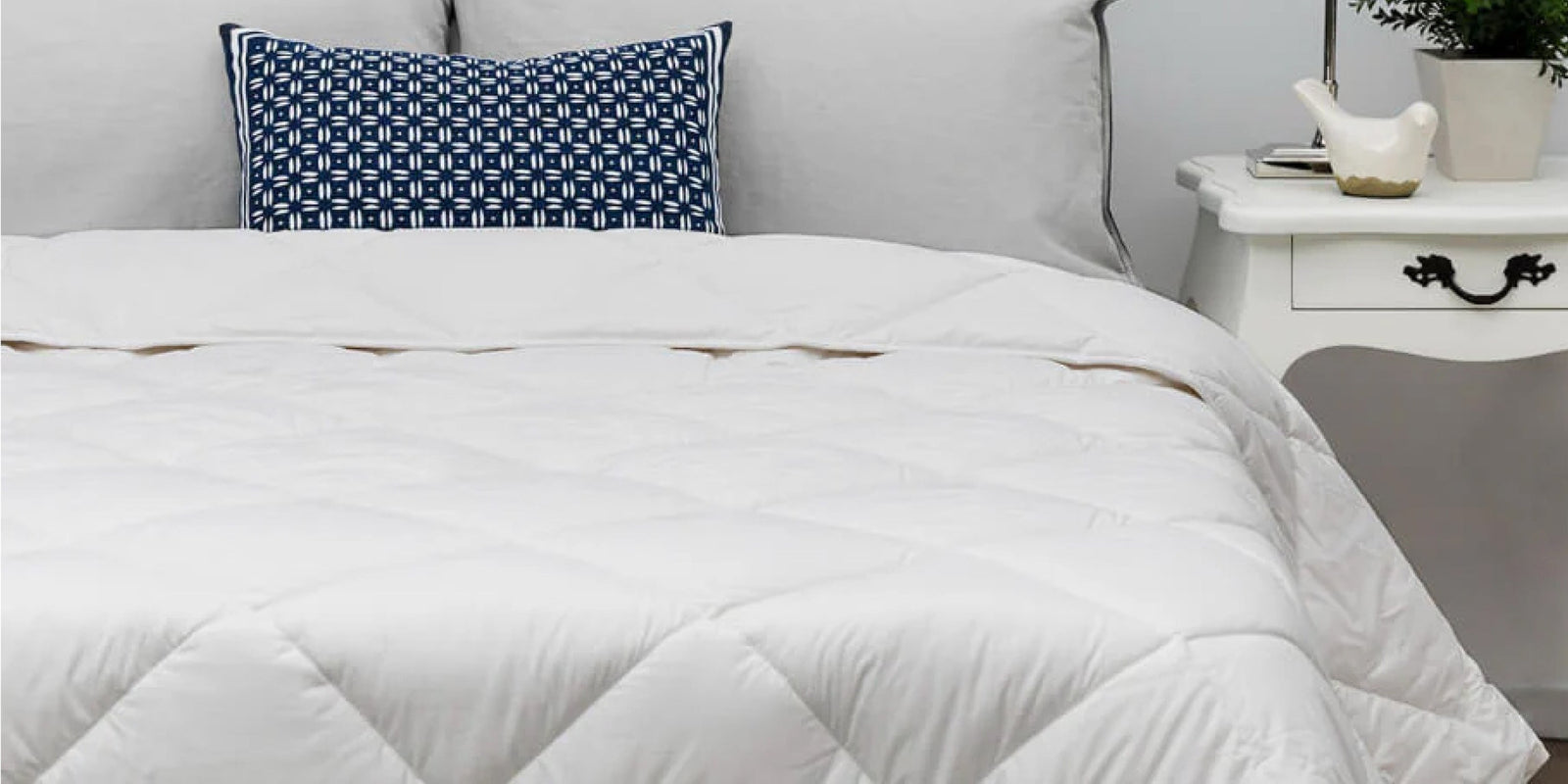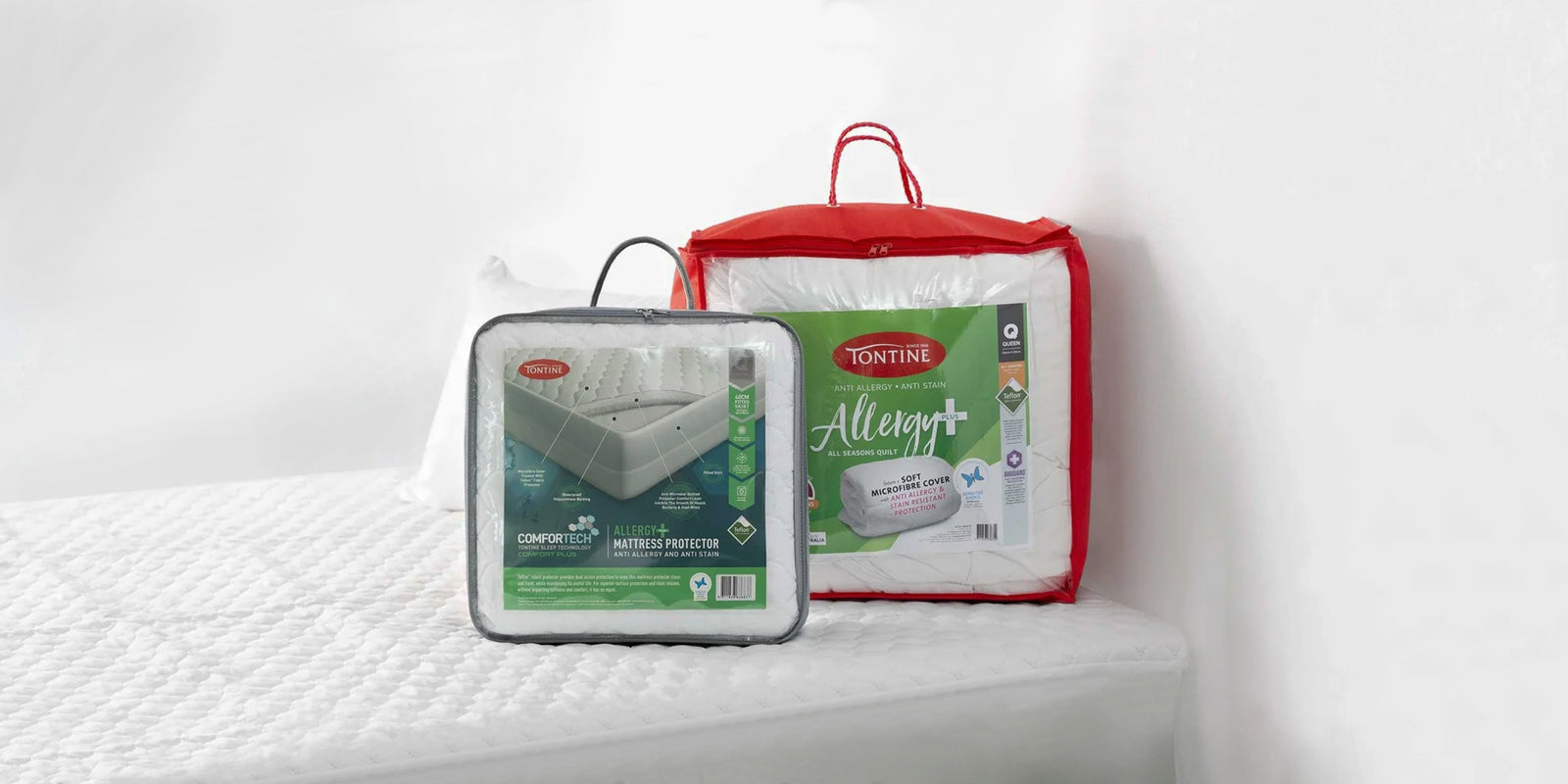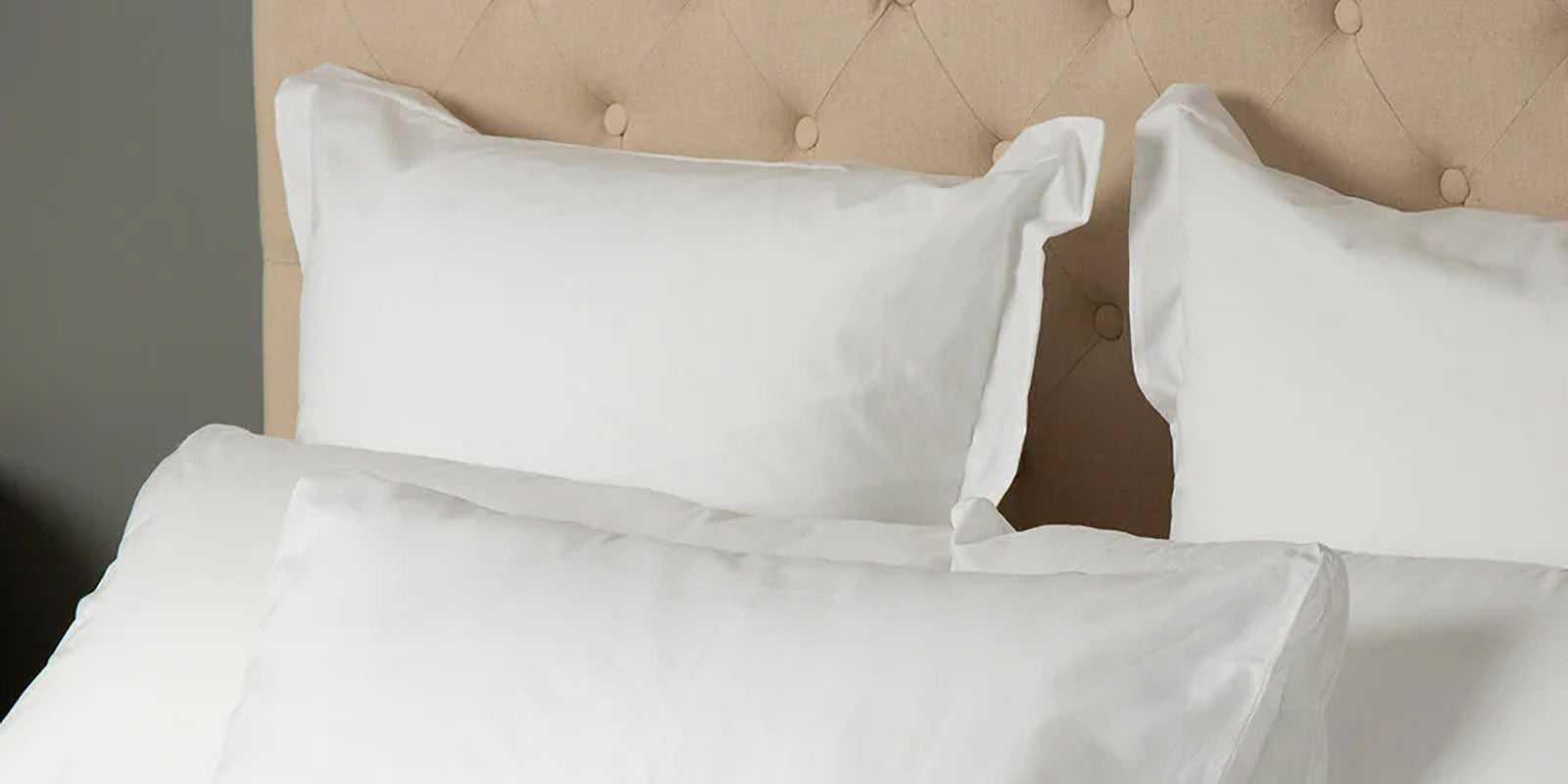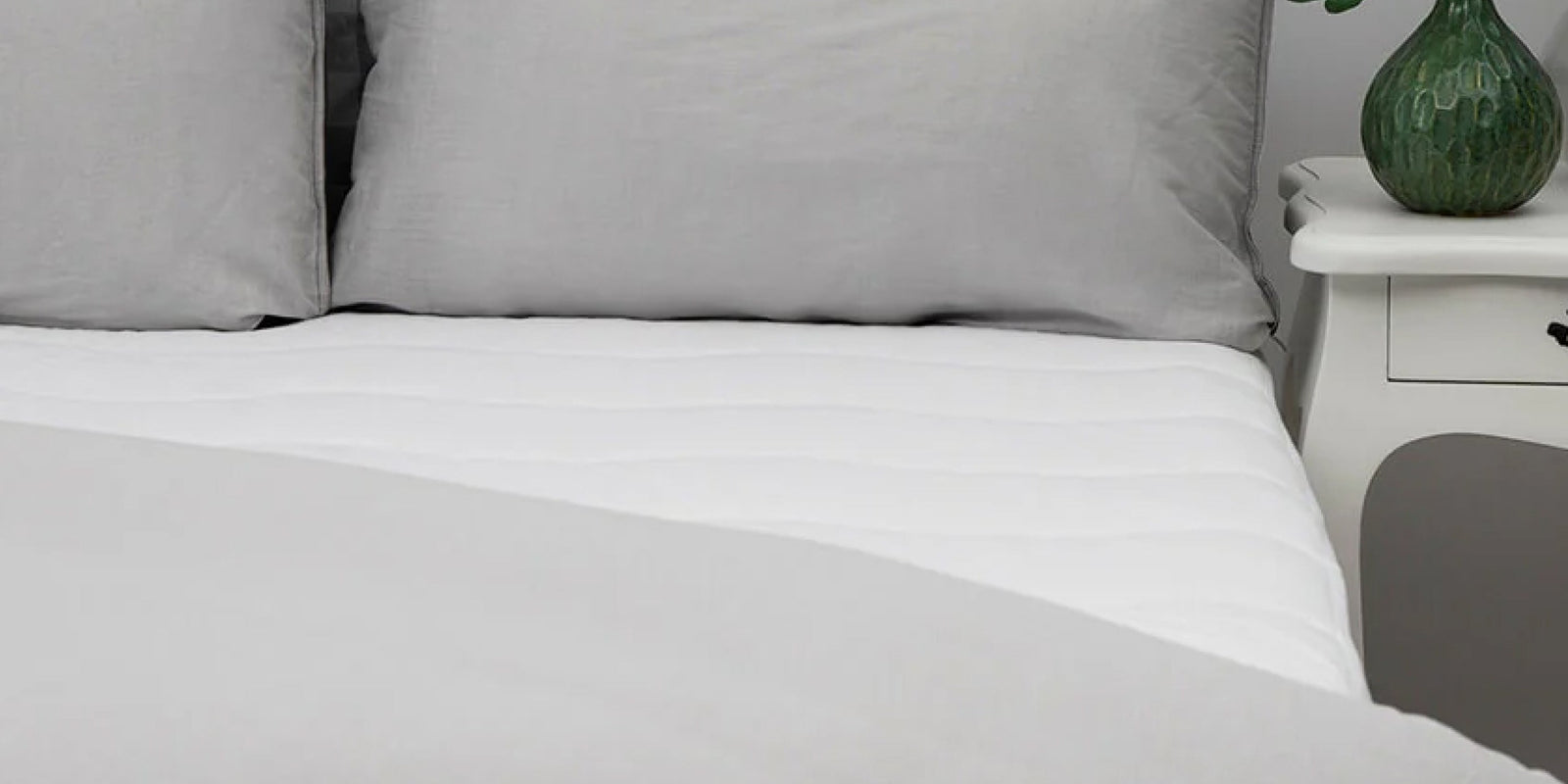HOW TO CHOOSE THE PERFECT DOONA® OR QUILT
It might seem tricky, but choosing the perfect quilt or doona for you and your family can be an easy and rewarding experience if you go in prepared and know what to look for.
We all know that ensuring you and your family sleep comfortably goes a long way towards your health and happiness.
That’s why we’ve put together a range of things to consider to ensure you get the right quilt for your needs!
The most important things to consider when looking for a new quilt, duvet or Doona® include:
- Quilt Warmth
- Quilt Size
- Quilt Weight
- Desired Loft
- Your Sleeping Partner
- Budget
- Quilt Durability
- Additional Considerations
- Filling Options
Let’s have a closer look at each one of these in turn, along with some other information you might find useful.
1. Warmth
The warmth of a quilt is probably the number one consideration for most people.
In other countries, quilts use standardised rating systems to measure warmth. For example, the UK uses the Tog rating system to measure thermal insulation.
In Australia, there is no uniform standard to measure warmth across different brands. However, quilts are typically given a numbered rating alongside a description about their warmth of the quilt and the season they are most suitable for. For example, a quilt may have a warmth rating of 3, and or a description such as high warmth, most suitable for winter.
To make it easy for you, Tontine quilts feature both a numerical warmth rating, warmth description and season suitability guide to make the warmth of the quilt clear.
As part of checking that your new quilt has the correct warmth for you, it’s also worth checking its construction, including the stitching, to make sure that the warmth will stay evenly distributed across the quilt. For example, box stitching, diamond stitching and cloud stitching will prevent filling from bunching with use.
It’s also important to remember that quilt weight doesn’t necessarily correlate with quilt warmth.
Seasonality often comes into play when we’re considering the ideal warmth of a quilt, which is why quilts come in different warmth ratings in the first place.
For maximum comfort throughout the year, it’s usually best to change the quilt on your bed to suit the particular season you’re in - particularly if you live in Australia’s southern states. For example, this might mean rotating between a high warmth quilt and a low-warmth quilt throughout the year, and maybe even using a medium warmth quilt during the transitionary seasons.
If that’s not the right option for you, go for a low-warmth or all seasons quilt, and in winter you can always place a blanket on top of your quilt as needed, or use a set of flannelette sheets for extra warmth.
Lastly, it’s important to look into the case material of your quilt. Even if you purchase a breathable, lightweight summer quilt, if the casing material is made from polyester, you might still find yourself waking up in a pool of sweat.
2. Quilt Size
One of the first things to look at when shopping for a new quilt is the size of the quilt.
Of course, there’s no point buying a single size quilt if you have a king size bed. Sounds pretty straightforward, right? Just be careful - there are a few other factors to consider.
Firstly, Australian standard quilt sizes are different from many other countries, so if you’re shopping online it’s best to check the dimensions carefully to make sure any quilt covers from international stores will fit your new quilt!
| Australian Size | UK Size | US Size | |
| Single | 140 x 210 | 135 x 200 |
100 x 190 (Twin) |
| Double | 180 x 210 | 200 x 200 |
137 x 190 (Full) |
| Queen | 210 x 210 | - | 150 x 200 |
| King | 240 x 210 | 220 x 230 | 240 x 250 |
| Super King | 270 x 240 | 260 x 220 |
280 x 250 (California King) |
Secondly, you might want to consider going up a size for the luxurious oversized look. This can make your whole room feel a lot bigger and more put together.

Lastly, going up a size will future-proof you for any future bed upgrades! It’s especially popular to buy a double quilt for kids who are going into a single bed, as you’ll save money down the track.
Tip: If you have a king single bed, a double size quilt will be the best option for you.
3. Quilt Weight
In addition to the warmth of a quilt, the weight of the quilt is another important consideration.
Some people love to snuggle under the weight of a heavy quilt because it makes them feel comfortable and secure. Others prefer light and fluffy quilts which feel like you’re sleeping on a cloud.
A common misconception here is to assume that a winter warmth quilt is heavy, and a summer or all seasons quilt is automatically going to be light. However, this isn’t always the case, as a densely-packed down quilt will be both lightweight and warm.
When choosing the right quilt for you, be sure to check both the warmth rating and the quilt weight to make sure you find the perfect quilt for you.
Again, all Tontine quilts feature both the warmth rating and quilt weight to make it simple and easy to find the perfect quilt for you or the person you’re shopping for.
4. Desired Loft
Quilt loft refers to how high a quilt sits. It is more of an interior design consideration than a functional concern, since it affects how fluffy the quilt looks on the bed.
For those that love the look of a fluffy luxurious quilt, look for a quilt described as high loft, and chances are you’ll find the quilt you’re looking for.
One downside of a high-loft quilt is that it can make it a bit harder to change your quilt cover. If this is something you don’t enjoy dealing with, a low-loft quilt might be better for you.
5. Your Sleeping Partner
Many people have had the experience of waking up in the middle of the night to find that your sleeping partner has dragged the quilt over to their side of the bed and left us uncovered and cold.
This phenomenon happens because many of us have different sleeping preferences to that of our partner. These preferences more often than not have to do with differences in basal body temperature while we sleep, as it’s very common for women to be cold at night, while their male partners are hot.
This can make it difficult to find the perfect quilt to suit a hot and cold sleeper, and at least for someone, a compromise needs to be made.
If this is an issue in your household, you might consider a dual warmth quilt, which has more filling on one side than the other. That way, two people with different sleeping preferences can sleep side by side comfortably under the same quilt.
If you have similar sleeping temperatures but still find yourself playing tug of war with your quilt, you might also want to consider upsizing it so there’s more to go round.
6. Budget
The golden rule when it comes to buying a new quilt for yourself or someone you love, is the same as when you’re buying a new pillow:
Buy the best quilt you can afford!
Good quality sleep plays a vital role in ensuring we all lead happy and healthy lives, and along with the mattress you sleep on and the quality of your pillow, your quilt plays a key role in determining how comfortable you are throughout the night so it is an important factor affecting your quality of sleep.
The things that most affect the price you pay for your new quilt is the type and quality of materials it's made from, and where it's made.
Some materials are more expensive than others, for example feather and down and Australian wool quilts are typically more expensive than cotton and polyester quilts, since the fillings cost more to produce.
However, even among quilts made with the same type of material, there can be major quality differences. For example, not all polyester fibres have the same specifications and treatments which will affect how they last in the long term.
Where a quilt is made can also affect its price. For example, generally Australian made quilts are often a little more expensive than imported quilts, which typically reflects a better quality of construction and grade of material used.
So, if you can avoid it, don’t let price be too much of a factor when buying a new quilt. All going well, it should end up cheaper in the long run as a high quality quilt that perfectly suits your needs will last for many years to come.
7. Durability
Often, but not always, related to the price of a new quilt is its durability.
Durable quilts are those made using higher-quality (hence costlier) materials, hence the common association between durability and the price of the quilt.
The material type, in addition to the material quality, used to make a quilt usually has a direct link with how durable a quilt is, but so too is how well you care for your new quilt.
A good quality quilt should last for years with normal use and regular care. Regarding care, some quilts are machine washable, while others can only be dry cleaned. If you wash your quilts regularly, you may want to look specifically for a machine washable quilt.
With suitable care, Tontine quilts are known to be among the most durable quilts you can buy. For more information about caring from your new quilt, read the Tontine Quilt Care Guide.
8. Any Additional Considerations
In addition to all the considerations listed above, you may also need to consider a few other things.
These include things like whether you suffer from dust allergies or asthma, whether your child is transitioning from sleeping in a cot to a big bed for the first time, and the like.
In each of these examples, there are specially-designed quilts to cater to these special needs, as well as all the other quilt choice considerations there are.
For example, the fibres used in making Tontine Anti-Allergy quilts are coated with an antimicrobial treatment that inhibits the growth of bacteria, as well as mould and dust mites, which are known triggers of allergies and asthma. What’s more, these anti-allergy quilts are approved by the National Asthma Council.
For those going through menopause, a cooling quilt could be the key to getting the rest you very much need.
If you’re shopping for a child, consider a quilt from the Tontine kids' quilt range. For younger kids and those with health issues, a stain-resistant quilt might come in handy.
9. Quilt Filling Options
As mentioned above, the materials used to construct a quilt can have a bearing on its price, but most of the time people choose a quilt made out of one material or another because of the characteristics that each material brings to the functionality of the quilt.
Here’s some basic information about the different materials used to make quilts and what the benefits of each are.
Also take note of what fabric the casing of your quilt is made from - you’ll want it typically want it to be a natural fibre such as cotton.
Cotton Quilts
Cotton is a natural material which is valued for its quality, comfort, durability and softness. Cotton is generally considered to be much cooler than some of the other quilt materials because it tends to be thinner, lighter and breathes easily.
If you’re prone to clamminess in the night, a cotton quilt will be a great option for you.
Warmth: Cotton quilts are available in a range of different warmths no matter what climate you live in.
Weight: Cotton quilts are a medium weight option.
Loft: Cotton quilts tend to be on the flatter side, making them an easy option if you dislike changing your duvet cover!
Polyester Quilts
Polyester is very popular as a quilt filling because it is very efficient at retaining heat, is very light and durable, and can be coated with anti-bacterial and anti-microbial treatments that make them ideal for allergy and asthma sufferers.
Polyester quilts are also easy to care for, and are machine washable, making them great for kids, older people, and guest rooms. Even better, quilts made with very thick microfibre can mimic the warmth and feel of a much more expensive feather and down quilt.
Warmth: Polyester quilts range from All Seasons to winter. However, they are less breathable than natural fibres, so beware if you are a hot sleeper.
Weight: Depending on their fill levels, polyester quilts will typically be a medium weight.
Loft: Polyester quilts range from medium to high loft, making them great for the luxury look at a lower cost.
Wool Quilts
Wool fibres are natural and biodegradable, and wool makes a wonderful filling for quilts because wool helps our body to regulate its own temperature by absorbing body moisture and eliminating humidity so you don't feel hot and clammy during the warmer months. Wool fibres also trap air keeping you warmer in winter.
Some wool quilts are dry clean only, but Tontine offers a range of wool quilts that are machine washable.
Warmth: All Seasons wool quilts will keep you warm during the winter months and cool and comfortable during the summer, but we also have Super Warm wool quilts that are perfect if you live in an alpine region.
Weight: Wool quilts are on the heavier side.
Loft: Though not as fluffy as feather and down, wool quilts still have decent loft to them for that cosy feeling with added weight.
Feather and Down Quilts
Down has the best thermal properties of any natural fibre, and is very light and fluffy, so you get the warmth without the weight.
Feather and down quilts are very soft, light and fluffy, so look wonderful on the bed, if you’re into interior design and decoration.
Feather and down quilts are usually much more expensive than quilts made with other materials, and if not regularly washed, can be allergenic to some people.
Warmth: Feather and down quilts come in varying fill levels, so there are options that’ll suit summer, winter, and the whole year.
Weight: Very light.
Loft: These duvets are famous for having a lot of loft.
As you can see, choosing the right quilt isn’t as straightforward as making sure it fits your bed.
And although there are quite a few factors to consider, the investment in choosing the right quilt and buying the right one for you, will pay off in terms of providing years of great night’s sleep.
If you still need to compare your options, we’ve put together a simple table for you:
|
Loft |
Season | Washability | Cost | |
| Cotton | Low | Summer | Some are machine washable | $ |
| Polyester | High | All Seasons | Machine washable | $ |
| Wool | Medium | All Seasons to Winter | Some are machine washable | $$ |
| Feather & Down | High | All Seasons to Winter | Dry clean only | $$$ |
For comfort you can trust, the only choice is Tontine.




